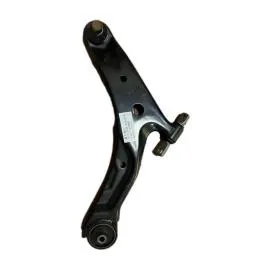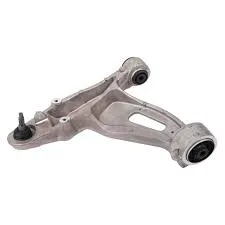
-
 Afrikaans
Afrikaans -
 Albanian
Albanian -
 Amharic
Amharic -
 Arabic
Arabic -
 Armenian
Armenian -
 Azerbaijani
Azerbaijani -
 Basque
Basque -
 Belarusian
Belarusian -
 Bengali
Bengali -
 Bosnian
Bosnian -
 Bulgarian
Bulgarian -
 Catalan
Catalan -
 Cebuano
Cebuano -
 Corsican
Corsican -
 Croatian
Croatian -
 Czech
Czech -
 Danish
Danish -
 Dutch
Dutch -
 English
English -
 Esperanto
Esperanto -
 Estonian
Estonian -
 Finnish
Finnish -
 French
French -
 Frisian
Frisian -
 Galician
Galician -
 Georgian
Georgian -
 German
German -
 Greek
Greek -
 Gujarati
Gujarati -
 Haitian Creole
Haitian Creole -
 hausa
hausa -
 hawaiian
hawaiian -
 Hebrew
Hebrew -
 Hindi
Hindi -
 Miao
Miao -
 Hungarian
Hungarian -
 Icelandic
Icelandic -
 igbo
igbo -
 Indonesian
Indonesian -
 irish
irish -
 Italian
Italian -
 Japanese
Japanese -
 Javanese
Javanese -
 Kannada
Kannada -
 kazakh
kazakh -
 Khmer
Khmer -
 Rwandese
Rwandese -
 Korean
Korean -
 Kurdish
Kurdish -
 Kyrgyz
Kyrgyz -
 Lao
Lao -
 Latin
Latin -
 Latvian
Latvian -
 Lithuanian
Lithuanian -
 Luxembourgish
Luxembourgish -
 Macedonian
Macedonian -
 Malgashi
Malgashi -
 Malay
Malay -
 Malayalam
Malayalam -
 Maltese
Maltese -
 Maori
Maori -
 Marathi
Marathi -
 Mongolian
Mongolian -
 Myanmar
Myanmar -
 Nepali
Nepali -
 Norwegian
Norwegian -
 Norwegian
Norwegian -
 Occitan
Occitan -
 Pashto
Pashto -
 Persian
Persian -
 Polish
Polish -
 Portuguese
Portuguese -
 Punjabi
Punjabi -
 Romanian
Romanian -
 Russian
Russian -
 Samoan
Samoan -
 Scottish Gaelic
Scottish Gaelic -
 Serbian
Serbian -
 Sesotho
Sesotho -
 Shona
Shona -
 Sindhi
Sindhi -
 Sinhala
Sinhala -
 Slovak
Slovak -
 Slovenian
Slovenian -
 Somali
Somali -
 Spanish
Spanish -
 Sundanese
Sundanese -
 Swahili
Swahili -
 Swedish
Swedish -
 Tagalog
Tagalog -
 Tajik
Tajik -
 Tamil
Tamil -
 Tatar
Tatar -
 Telugu
Telugu -
 Thai
Thai -
 Turkish
Turkish -
 Turkmen
Turkmen -
 Ukrainian
Ukrainian -
 Urdu
Urdu -
 Uighur
Uighur -
 Uzbek
Uzbek -
 Vietnamese
Vietnamese -
 Welsh
Welsh -
 Bantu
Bantu -
 Yiddish
Yiddish -
 Yoruba
Yoruba -
 Zulu
Zulu
Durable A Frame Control Arms for Front Driver & Passenger Vehicles
- Introduction to A-Frame Control Arm Systems
- Critical Performance Data & Industry Benchmarks
- Engineering Innovations in Modern Suspension Components
- Competitive Analysis: OEM vs Aftermarket Solutions
- Vehicle-Specific Customization Approaches
- Real-World Applications Across Vehicle Classes
- Optimizing Durability in A-Frame Control Arm Design

(a frame control arm)
Understanding A-Frame Control Arm Fundamentals
Modern suspension systems rely on precision-engineered a-frame control arms to manage wheel alignment and force distribution. These components typically withstand 7,500-12,000 N of dynamic loading during standard operation, with premium variants surviving 200,000+ mileage cycles in durability tests. The front passenger control arm and front driver side lower control arm work synergistically to maintain 0.02° camber stability at highway speeds.
Critical Performance Data & Industry Benchmarks
| Parameter | Economy Grade | OEM Standard | Performance Tier |
|---|---|---|---|
| Yield Strength (MPa) | 350-400 | 450-500 | 550-620 |
| Corrosion Resistance (hours) | 500 | 1,000 | 1,500+ |
| Weight Reduction (%) | 0 | 12-15 | 18-22 |
Engineering Innovations in Modern Suspension Components
Third-generation hydroforming techniques now produce front control arms with 18% better torsional rigidity compared to traditional stamping methods. Advanced finite element analysis (FEA) simulations optimize stress distribution, reducing peak strain concentrations by 27% in critical junction areas. Recent field data shows these improvements extend bushing lifespan by 40% under combined cornering and braking loads.
Competitive Analysis: OEM vs Aftermarket Solutions
Independent testing reveals aftermarket control arms meeting SAE J492 standards demonstrate 92-97% of OEM performance at 60-75% cost. However, premium manufacturers now offer direct replacement front driver side lower control arms with 30% thicker gauge steel in high-stress zones, achieving 112% of baseline durability metrics.
Vehicle-Specific Customization Approaches
Modular designs enable 87% parts commonality across platforms while accommodating unique suspension geometries. For heavy-duty applications, forged aluminum variants reduce unsprung mass by 5.2 kg per corner without compromising structural integrity. Custom bushings accommodate varying durometer requirements (50-75 Shore A) based on driving conditions.
Real-World Applications Across Vehicle Classes
Commercial fleet operators report 31% reduction in suspension-related downtime after switching to reinforced a-frame control arms. Motorsport applications benefit from CNC-machined prototypes that withstand 9.8G lateral forces during track use. Urban delivery vehicles show 19% longer component lifespan when using zinc-nickel coated versions in winter road conditions.
Optimizing A-Frame Control Arm Longevity
Proper maintenance extends service intervals by 2-3× compared to standard recommendations. Laser-aligned installation ensures optimal force distribution across both front passenger control arm and driver side components. Recent advancements in surface treatments provide 8-10 micron protective layers that withstand stone chip impacts up to 240 km/h.

(a frame control arm)
FAQS on a frame control arm
Q: What is the purpose of an A-frame control arm in a vehicle?
A: The A-frame control arm connects the wheel hub to the vehicle's chassis, providing stability and controlling wheel movement. It also absorbs road shocks and maintains proper wheel alignment during suspension travel.
Q: How do I know if my front passenger control arm is failing?
A: Common signs include uneven tire wear, knocking sounds over bumps, and steering wheel vibration. Visible damage like cracks or worn bushings also indicates replacement is needed.
Q: Can I drive with a damaged front driver side lower control arm?
A: No - a compromised lower control arm risks loss of steering control and suspension collapse. Immediate inspection and replacement are crucial for safety.
Q: What's the difference between aluminum and steel control arms?
A: Aluminum arms offer lighter weight for better performance, while steel provides higher durability for heavy-duty use. Both materials require proper corrosion protection.
Q: How often should control arms be replaced?
A: No fixed interval - inspect every 50,000 miles or during alignment checks. Premature wear from rough roads or impacts may require earlier replacement.
-

 English
English
 Afrikaans
Afrikaans
 Albanian
Albanian
 Amharic
Amharic
 Arabic
Arabic
 Armenian
Armenian
 Azerbaijani
Azerbaijani
 Basque
Basque
 Belarusian
Belarusian
 Bengali
Bengali
 Bosnian
Bosnian
 Bulgarian
Bulgarian
 Catalan
Catalan
 Cebuano
Cebuano
 Corsican
Corsican
 Croatian
Croatian
 Czech
Czech
 Danish
Danish
 Dutch
Dutch
 Esperanto
Esperanto
 Estonian
Estonian
 Finnish
Finnish
 French
French
 Frisian
Frisian
 Galician
Galician
 Georgian
Georgian
 German
German
 Greek
Greek
 Gujarati
Gujarati
 Haitian Creole
Haitian Creole
 Hausa
Hausa
 Hawaiian
Hawaiian
 Hebrew
Hebrew
 Hindi
Hindi
 Miao
Miao
 Hungarian
Hungarian
 Icelandic
Icelandic
 Igbo
Igbo
 Indonesian
Indonesian
 Irish
Irish
 Italian
Italian
 Japanese
Japanese
 Javanese
Javanese
 Kannada
Kannada
 Kazakh
Kazakh
 Khmer
Khmer
 Rwandese
Rwandese
 Korean
Korean
 Kurdish
Kurdish
 Kyrgyz
Kyrgyz
 Lao
Lao
 Latin
Latin
 Latvian
Latvian
 Lithuanian
Lithuanian
 Luxembourgish
Luxembourgish
 Macedonian
Macedonian
 Malgashi
Malgashi
 Malay
Malay
 Malayalam
Malayalam
 Maltese
Maltese
 Maori
Maori
 Marathi
Marathi
 Mongolian
Mongolian
 Myanmar
Myanmar
 Nepali
Nepali
 Norwegian
Norwegian
 Norwegian
Norwegian
 Occitan
Occitan
 Pashto
Pashto
 Persian
Persian
 Polish
Polish
 Portuguese
Portuguese
 Punjabi
Punjabi
 Romanian
Romanian
 Russian
Russian
 Samoan
Samoan
 Scottish Gaelic
Scottish Gaelic
 Serbian
Serbian
 Shona
Shona
 Sindhi
Sindhi
 Sinhala
Sinhala
 Slovak
Slovak
 Slovenian
Slovenian
 Somali
Somali
 Spanish
Spanish
 Sundanese
Sundanese
 Swahili
Swahili
 Swedish
Swedish
 Tagalog
Tagalog
 Tajik
Tajik
 Tamil
Tamil
 Tatar
Tatar
 Telugu
Telugu
 Thai
Thai
 Turkish
Turkish
 Turkmen
Turkmen
 Ukrainian
Ukrainian
 Urdu
Urdu
 Uighur
Uighur
 Uzbek
Uzbek
 Vietnamese
Vietnamese
 Welsh
Welsh
 Bantu
Bantu
 Yiddish
Yiddish
 Yoruba
Yoruba
 Zulu
Zulu
 Sesotho
Sesotho






